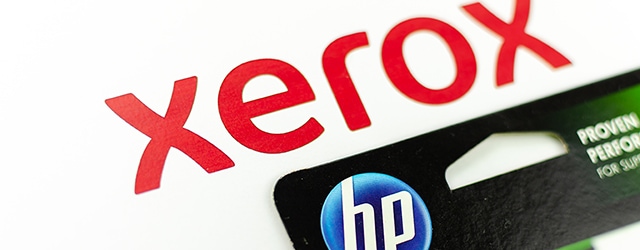Only time will tell whether the deal is a merger or an acquisition.

Enrique Lores had been working as CEO of Palo Alto, California–based HP Inc. for only a few days in November when its much smaller rival Xerox made a $33 billion cash-and-stock bid to take over his company. Lores, born in Madrid, joined HP more than 30 years ago as an engineer.
“As much as I dreamed of creating the impossible, I never could have imagined where my personal journey through the halls of HP would lead,” Lores said in an August company letter. “And I certainly never could have imagined that I would have the privilege of serving HP as our next CEO.”
A quintessential company man, Lores rose through the ranks and was named president of Imaging and Printing at HP in 2015. In June of this year, HP announced a partnership with Xerox under which the Norwalk, Connecticut–based company would buy printers from HP. This was a continuation of an arrangement that Xerox had with Samsung before HP acquired Samsung’s printer business in 2017.
However, the printers that Xerox is sourcing from HP do not include HP software that provides security against cyberattacks and a simpler and more reliable experience when dealing with document workflow. It is this unique technology that Xerox is seeking in its takeover attempt.
Activist investor Carl Icahn holds stakes in both HP and Xerox, which are both companies in a shrinking industry that he believes should consolidate quickly as work goes digital and environmentalists decry the use of paper. After killing a plan for Xerox to merge with Japan’s Fujifilm last year, Icahn is backing the copier company’s bid for HP, which he believes would produce significant synergies.
Lores, who spent the past year developing a plan to restructure HP and who has cut its workforce by up to 9,000 people, wants the company to advance its leadership in personal systems (HP is the second-largest PC maker worldwide) and print, where he sees an opportunity to offer software services and to disrupt manufacturing industries with 3D printing. In late October, HP unveiled a cloud platform with more than 50 apps, enabling today’s mobile workforce to integrate paper and digital work streams.
Beginning late next year, HP plans to switch to a new business model whereby its subsidized printers will only be available to users who contract to buy HP supplies. Other buyers of HP printers who want to use cheaper imported cartridges will pay higher prices for the hardware.
HP is the world’s largest print-hardware maker, but its PC business produces nearly twice as much revenue. It is unlikely that Lores would be interested in making a deal with Xerox before he has had an opportunity to begin to implement his multiyear strategy to retool HP’s business. In light of HP’s size (more than three times that of Xerox) and its lower debt, analysts say it might make more sense for HP to acquire Xerox. The two companies have had conversations in the past about a potential business combination, but those talks did not succeed.



